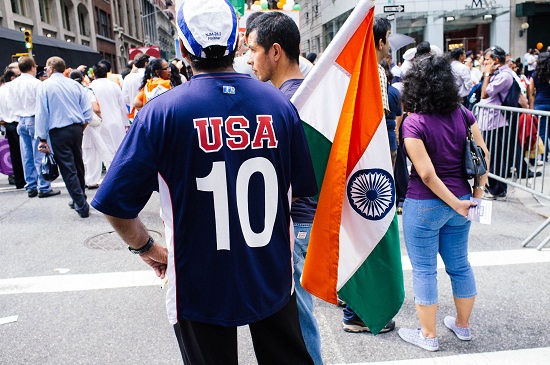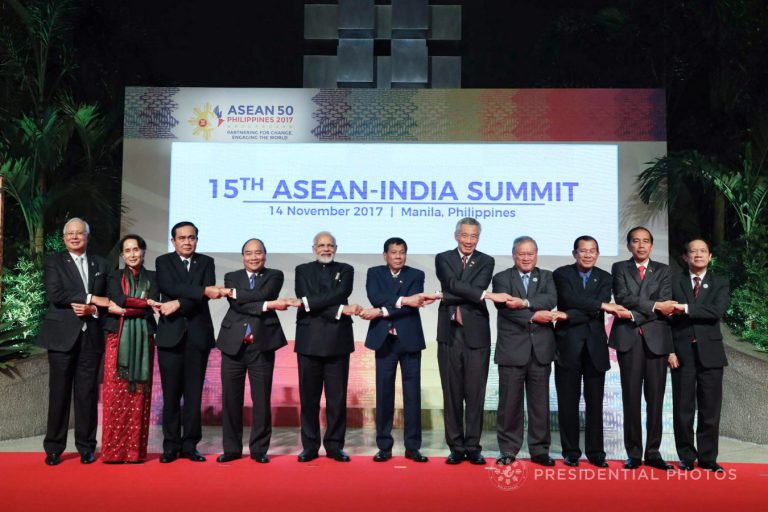Growing contours of Indo-US relations

The swearing in of Joe Biden as the 46th president of the United States ended a period of confused and violent presidential transition. Amidst this chaos, the White House declassified an important document titled ‘2018 U.S. Strategic Framework for the Indo-Pacific’. The framework’s major thrust is on countering the rise of China through various means, including defence and security cooperation with India and a host of other countries. It largely treats India as America’s military as well as security partner in the Indo-Pacific region while talks little about the economic and ideological convergence.
India’s importance in America’s strategic calculus is evident from the institutional mechanisms like the 2+2 bilateral dialogue and Quadrilateral Security Dialogue – QUAD. The growing strategic significance of the Indo-Pacific region in maintaining the liberal international order has prompted the Americans, who enjoyed cordial relations with both Pakistan and China during the Cold War era, to work closely with India. The very fact that two senior executives of the US government (Mike Pompeo and Mark Esper) travelled in-person just before the crucial 2020 Presidential Elections and amidst the COVID-19 pandemic, demonstrates the importance that the US political dispensation attaches to India. In this article, I try to elucidate the improving relations between the world’s two largest democracies, with a special emphasis on defence and nuclear energy.
Historical perspective
After gaining independence from the British rule, India chose to spearhead the cause of anti-colonial struggles and Afro-Asian solidarity, which necessitated a ‘non-aligned’ foreign policy. However, this policy was antithetical to the US interests, which was looking for partners in its ideological struggle against the Soviet Union (USSR). Moreover, practical considerations forced India to tilt towards the USSR during the 1971 Bangladesh Liberation War when the Americans sided with Pakistan. The Cold War era was thus largely marked by bitter Indo – US relations.
The situation changed when the USSR’s disintegration heralded a unipolar world order and India liberalized its economy. However, the 1998 nuclear tests invited economic sanctions imposed by the Clinton administration. It was only at the dawn of the millennium that sanctions were waived by the Bush administration, when the US needed to build an international consensus around ‘War on Terror’ after the 9/11 terrorist attacks. There has been no looking back since then.
Defence and the foundational agreements
Defence cooperation has formed the backbone of Indo-US ties, particularly since 9/11. The ‘General Security of Military Information Agreement’ – GSOMIA was signed in 2002 to facilitate exchange of military intelligence. It was followed by the announcement of the ‘Strategic Partnership’ in 2004 and the signing of a defence framework in 2005.
The previous decade saw even greater degree of cooperation. The India-US strategic dialogue commenced in 2010. In 2012, the Indo-US ‘Defence Technology & Trade Initiative’ – DTII was conceptualised in order to modify the defence relationship, from the traditional buyer -seller dynamic to collaborative defence R&D and manufacturing. In 2016, India was designated as a ‘Major Defence Partner’ which eases the requirement of defence exports to the country. In the same year the ‘Logistics Exchange Memorandum of Agreement’ – LEMOA was signed which gives both the countries access to each other’s military facilities like ports and air bases. LEMOA is the India-specific version of the logistics support agreement that the US signs with its close allies.
In 2018, India was elevated to the Strategic Trade Authorization Tier-1 (STA-1) status. This status bolsters the supply chain efficiency for the sale of high end defence and non-defence products to India by granting license exceptions. STA-1 paved the way for the signing of ‘Communications Compatibility and Security Agreement’ – COMCASA later that year during the inaugural 2+2 meeting. COMCASA would help in procuring encrypted communications equipment for the C-17 and P-8I aircrafts operated by the Indian Navy and C-130 operated by the Indian Air Force. It would also enable the military commanders of the two countries to communicate over secure channels, both during peacetime and war.
The latest (third edition) of the 2+2 dialogue witnessed the signing of two defence deals – ‘Basic Exchange and Cooperation Agreement’ – BECA and ‘Maritime Information Sharing Technical Arrangement’ – MISTA. After GSOMIA, LEMOA and COMCASA, BECA is the last among four foundational military agreements that underpin defence partnership between India and the US. It allows real time sharing of American geospatial intelligence and when operationalized fully, will improve the accuracy of India’s automated weapons systems like drones and cruise missiles.
Civil nuclear energy
The cooperation is pronounced in the field of nuclear energy too. In 2005, the ‘Civil Nuclear Cooperation Initiative’ was inked to lift the US moratorium on nuclear energy trade with India. This culminated in the historic ‘123 agreement’, simply known as the Indo – US Nuclear Deal, in 2008 when the Nuclear Suppliers Group (NSG) made exemption to its nuclear trade rules vis-à-vis India. It is often argued that it was due to Biden’s efforts, who was then the chairman of the Senate Committee on Foreign Relations, that the deal was successfully pushed through.
The proposed construction of a nuclear power plant in Kovvada, Andhra Pradesh, was raised by President Trump’s visit to India last year. This project is a joint venture between the Westinghouse and the Nuclear Power Corporation of India Limited (NPCIL). Kovvada is envisaged to be the largest nuclear plant in the country. However, controversies have delayed the project due to questionable procedures for land acquisition from the locals.
Way forward
As India entered the United Nations Security Council (UNSC) this year as a ‘Non-Permanent Member’, it should leverage its growing clout with the US to be vocal in its demand of making UNSC a more representative body. India’s two-year term should be geared towards fair treatment of the developing world through the expansion and democratisation of UNSC.
The US favours India’s membership in the NSG. India is already a member of other multilateral export control regimes – Missile Technology Control Regime (MTCR), the Wassenaar Agreement (WA) and the Australia Group (AG) – of which it received membership respectively in 2016, 2017 and 2018. An entry into NSG would lend great credibility to India as an emerging global power and hence, India should strive towards attaining this goal.
QUAD should be strengthened as a counterweight to the increasing Chinese influence. Participation of the Australian Navy in the 2020 Malabar Naval Exercises is a positive sign. It marks the first time since 2007 when all the member countries participated in the exercise. QUAD’s emergence as a multilateral organisation with an independent institutional set-up in the near future can’t be ruled out.
There are speculations that India, along with the East Asian giants – Japan and South Korea, may join the ‘Five Eyes’ intelligence sharing alliance. However, it should be noted that the US intelligence community have been notorious for trampling over privacy rights in the name of collecting intelligence. A calibrated approach is thus required when deciding whether to join such alliances.
Indo-US relations have seen many ups and downs since 1947. Nevertheless, India’s overarching strategy should be to steer the relation towards bettering our national interests.
References
- Zeeshan, M. (2021, January 18). India and the US: Ideological Convergence No More? Retrieved January 25, 2021, from https://thediplomat.com/2021/01/india-and-the-us-ideological-convergence-no-more/
2. Office of the Spokesperson U.S. Department of State Archives. (2001, September 28). Sanctions on India and Pakistan. Retrieved January 25, 2021 from https://2001-2009.state.gov/r/pa/prs/ps/2001/5101.htm
3. Media Centre, Ministry of External Affairs, GoI (2005, July 2005). India and United States Successfully Complete Next Steps in Strategic Partnership. Retrieved January 28, 2021 from https://www.mea.gov.in/bilateral-documents.htm?dtl/6789/India+and+United+States+Successfully+Complete+Next+Steps+in+Strategic+Partnership
4. New Framework for the U.S.-India Defense Relationship. (2005, June 28). Retrieved January 25, 2021 from http://library.rumsfeld.com/doclib/sp/3211/2005-06-28%20New%20Framework%20for%20the%20US-India%20Defense%20Relationship.pdf
5. Media Note, Office of the Spokesman U.S. Department of State (2020, June 3). U.S.-India Strategic Dialogue Joint Statement. Retrieved January 28, 2021 from https://2009-2017.state.gov/r/pa/prs/ps/2010/06/142645.htm
6. Mahajan, Captain V. (2020, September 15). India-US: Defence Trade and Technology Initiative is the silent enabler. Retrieved February 1, 2021 from https://www.financialexpress.com/defence/india-us-defence-trade-and-technology-initiative-is-the-silent-enabler/2083679/
7. FP Staff. (2018, July 31). US gives India Strategic Trade Authorisation-1 status. Retrieved February 1, 2021 from https://www.firstpost.com/world/us-gives-india-coveted-strategic-trade-authorisation-1-status-all-you-need-to-know-about-what-this-means-4856681.html
8. Roy, S. (2020, November 3). Explained: BECA, and the importance of 3 foundational pacts of India-US defence cooperation. Retrieved February 1, 2021 from https://indianexpress.com/article/explained/beca-india-us-trade-agreements-rajnath-singh-mike-pompeo-6906637/
9. U.S. India Relations 1947-2020. Retrieved February 1, 2021 from https://www.cfr.org/timeline/us-india-relations
10. Samdani, MN. (2020, February 28). Nuclear power plant construction in Kovvada likely to be revived? Retrieved February 1, 2021 from https://timesofindia.indiatimes.com/city/amaravati/nuclear-power-plant-construction-in-kovvada-likely-to-be-revived/articleshow/74343866.cms
11. Gravitas Desk. (2021, January 2). As India set to begin another journey in UNSC this year, a playbook of how it can showcase its ability. Retrieved February 1, 2021 from https://www.wionews.com/india-news/as-india-set-to-begin-another-journey-in-unsc-this-year-a-playbook-of-how-it-can-showcase-its-ability-353937
12. Sharma, L., Yadav P. (2020, July 11). India and the Multilateral Export Control Regimes (MECRs): From Apartheid to Active Engagement. Retrieved February 1, 2021 from https://jia.sipa.columbia.edu/online-articles/india-and-multilateral-export-control-regimes-mecrs-apartheid-active-engagement
13. Kaushik, K. (2020, November 3). Explained: The purpose, participants of the Malabar Navy Exercise. Retrieved February 1, 2021 from https://indianexpress.com/article/explained/malabar-naval-exercise-india-6915447/
14. Mishra, A. (2020, October 24). Five Eyes alliance looks towards India. Retrieved February 1, 2021, from https://www.sundayguardianlive.com/news/five-eyes-alliance-looks-towards-india
Image Credit: the interpreter







